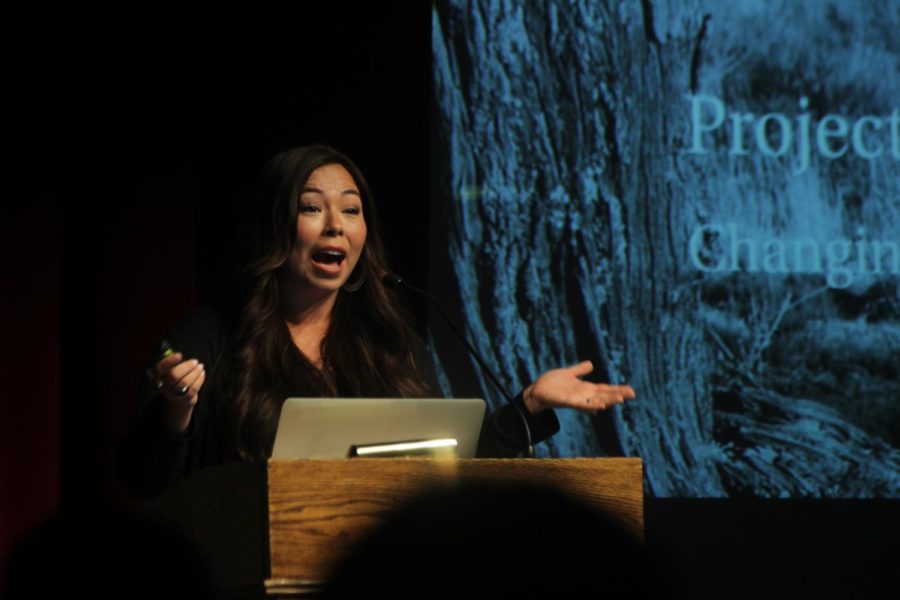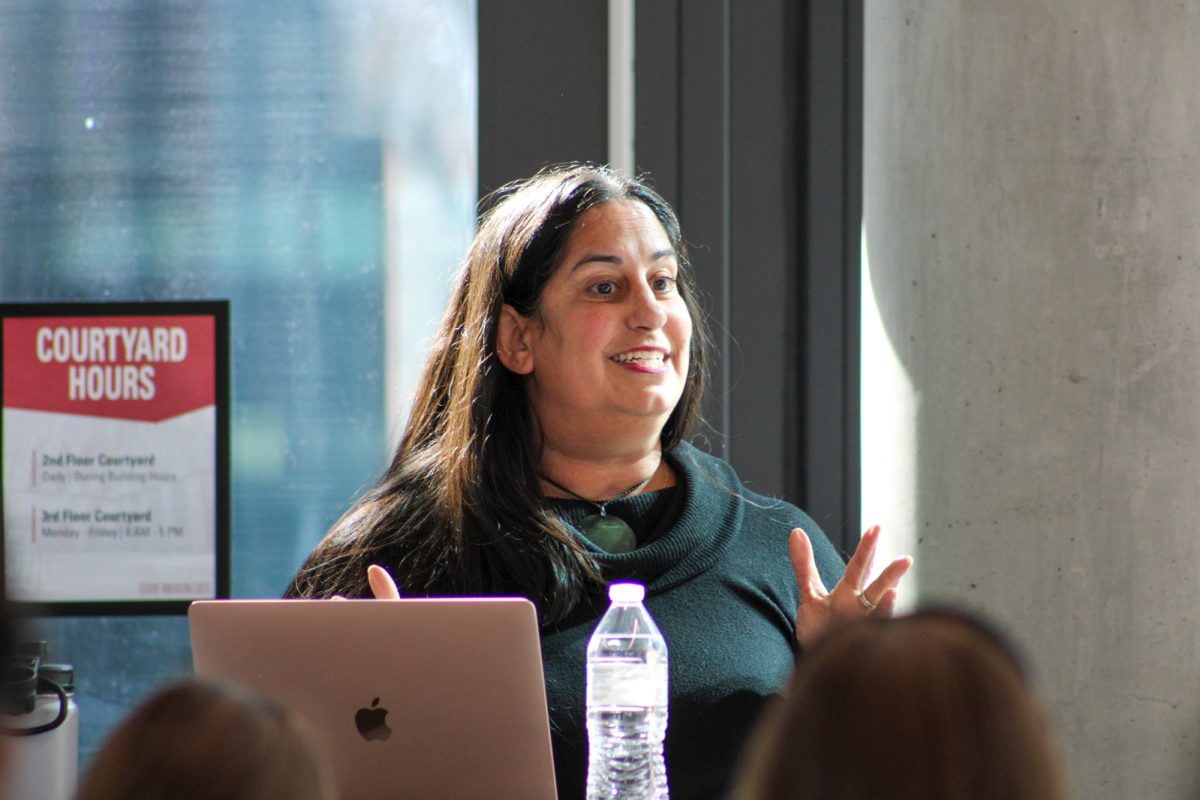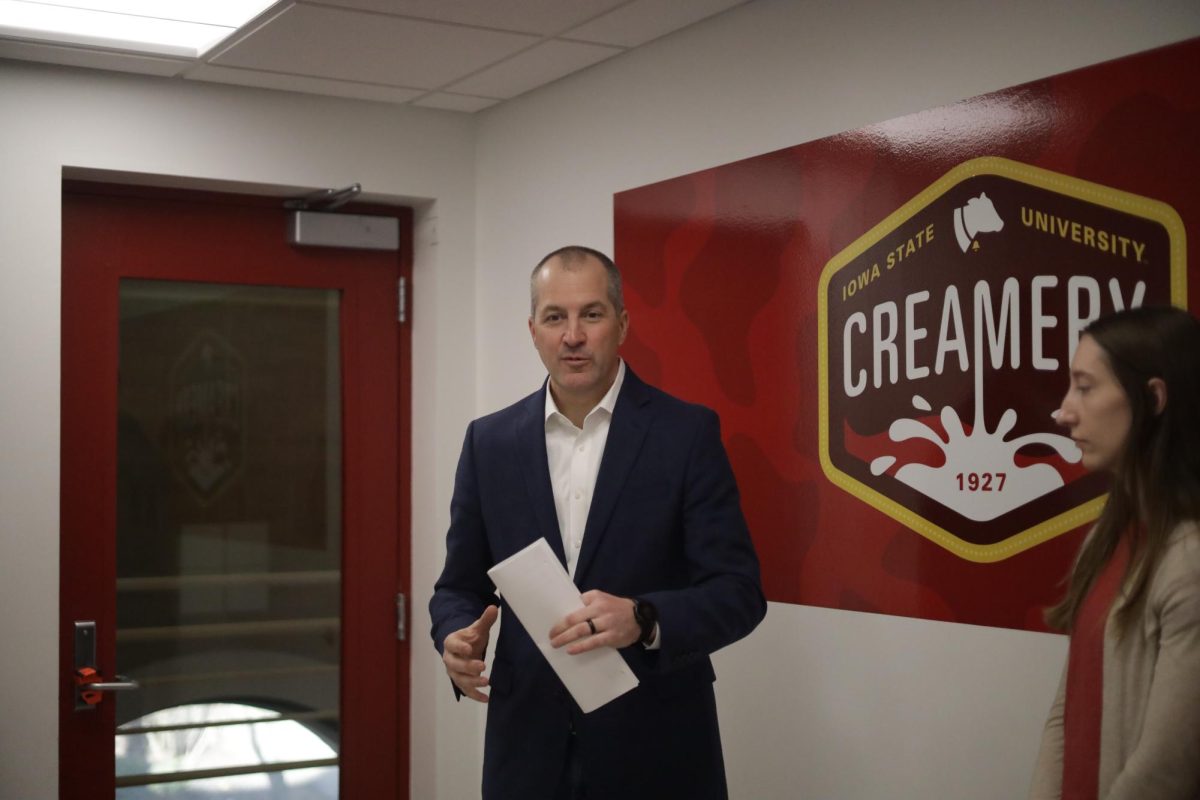Matika Wilbur shares personal stories in lecture on Native America
Ashley Siegner/Iowa State Daily
Matika Wilbur, a photographer from the Swinomish and Tulalip Tribes of the Pacific Northwest, speaks in the Great Hall in the Memorial Union on Nov. 13. “We are on indigenous land all the time,” Wilbur said during her lecture.
November 13, 2017
Photographer and social documentarian Matika Wilbur spoke Monday in a lecture titled “Changing the Way We See Native America.”
Wilbur is known for her multi-year national photo and narrative project called “Project 562,” wherein Wilbur seeks to document contemporary Native American identity by traveling to the 562 different tribes in America. She started in 2012 and has visited over 400 tribes so far.
“I’m an artist, not an academic, so it’s gonna be fun,” Wilbur told the crowd.
After being a teacher in her tribe, she decided to take on this journey because of things she has seen, and how rejecting indigenous intelligence is the idea that Wilbur believes needs to be fixed.
“The idea of including indigenous intelligence would be this big dream,” Wilbur said.
Wilbur said she wants to share this story by going to universities and speaking about her journey so far and what she has seen.
Wilbur’s presentation consisted of different sections where she told different stories of the places she visited. Each section and story included a portrait or set of pictures that she has taken on her journey.
The first section was titled “On Indigenous Land.”
The first story Wilbur told was about her visit to Hawaii where she met two different men that helped her realize some of the damage that has been done to the planet. She explained that there is a translucent film of garbage around the Hawaiian islands and that it is changing the ocean around them. Another story was about the protection of a sacred plant that led to protests when it was modified by a college.
Wilbur then stated that it helped her realize different things about how the world is changing.
“Even when I’m on vacation, I’m on indigenous land,” Wilbur said.
Wilbur then discussed Standing Rock in North Dakota. Wilbur was present at the peaceful protests and a told story of how she witnessed young people protesting and how the protest soon grew to 1,000 people.
Wilbur remembered what she called “distinct irony’ of what happened around the same time in 2016 when the Indians lost the World Series and how she did not see any of the protest footage on the news.
The second section was labeled “Cultural Education.”
Wilbur discussed what she sees as a need for equal value of education with a woman she met who was an activists for having tribal charter schools. She then mentioned statistics about how Native Americans attend high school, but only 50 would graduate, 20 would attend college and one would graduate and return for their Master’s degree.
“The time to change is right now,” Wilbur said.
Wilbur also talked about how harassment on college campuses has affected her life personally when she spoke of her nephew finding slurs written on his dorm room door.
“It is no longer okay to let this happen,” Wilbur said.
The third section was called “Stories of Hope”
One story in this section told of a man who wished to go to college against his parent’s wishes. The man instead walked all the way from Nebraska to Pheonix, Arizona just to go to college. The dean of the college happened to have Native American heritage and allowed the man to attend college without paying tuition or providing a transcript. The man went on to work with Dr. Martin Luther King Jr., and Wilbur said that he was part of a movement to “create space.”
Wilbur then went on to share a story of her childhood where she grew up fishing in canoes. She discussed being a part of a huge ceremony honoring a chief who has executed for not signing a treaty dealing with land. People rode their canoes and were there to be with the chief so he knew that he was not alone. The ceremony was important because of the realization of the chief’s impact and people how people are still impacted by it today.
The last section was called “Indians Are Real.”
Here Wilbur displayed images from Google searches of terms like “Asian American”, “African American” and “Hispanics”, where the results were of modern looking photos. Wilbur then searched “Native Americans”, and the results showed dated and often very old images of Native Americans
Wilbur’s final thought was of a reoccurring dream that she has been having where she sees people talking in Native American languages and exchanging different foods. In these dreams, she is experiencing a world that has embraced indigenous intelligence.
“Our histories and our fates have become intertwined,” Wilbur said.







